On Dec. 19, 1972, Apollo 17 astronauts Eugene A. Cernan, Ronald E. Evans, and Harrison H. “Jack” Schmitt, the first trained geologist to travel to the Moon, successfully ended their 13-day Moon landing mission with a splashdown in their Command Module (CM) America in the Pacific Ocean. Recovery teams from the U.S.S. Ticonderoga (CVS-14) monitored the descent and landing and retrieved the astronauts and their spacecraft. Officials from NASA and the U.S. Navy greeted the astronauts as they stepped off the recovery helicopter. President Richard M. Nixon telephoned to congratulate them on their successful mission. They spent their first night on Earth aboard Ticonderoga before beginning the journey home to Houston. Workers removed toxic materials from America to make it safe for transport back to its manufacturer for postflight inspections.
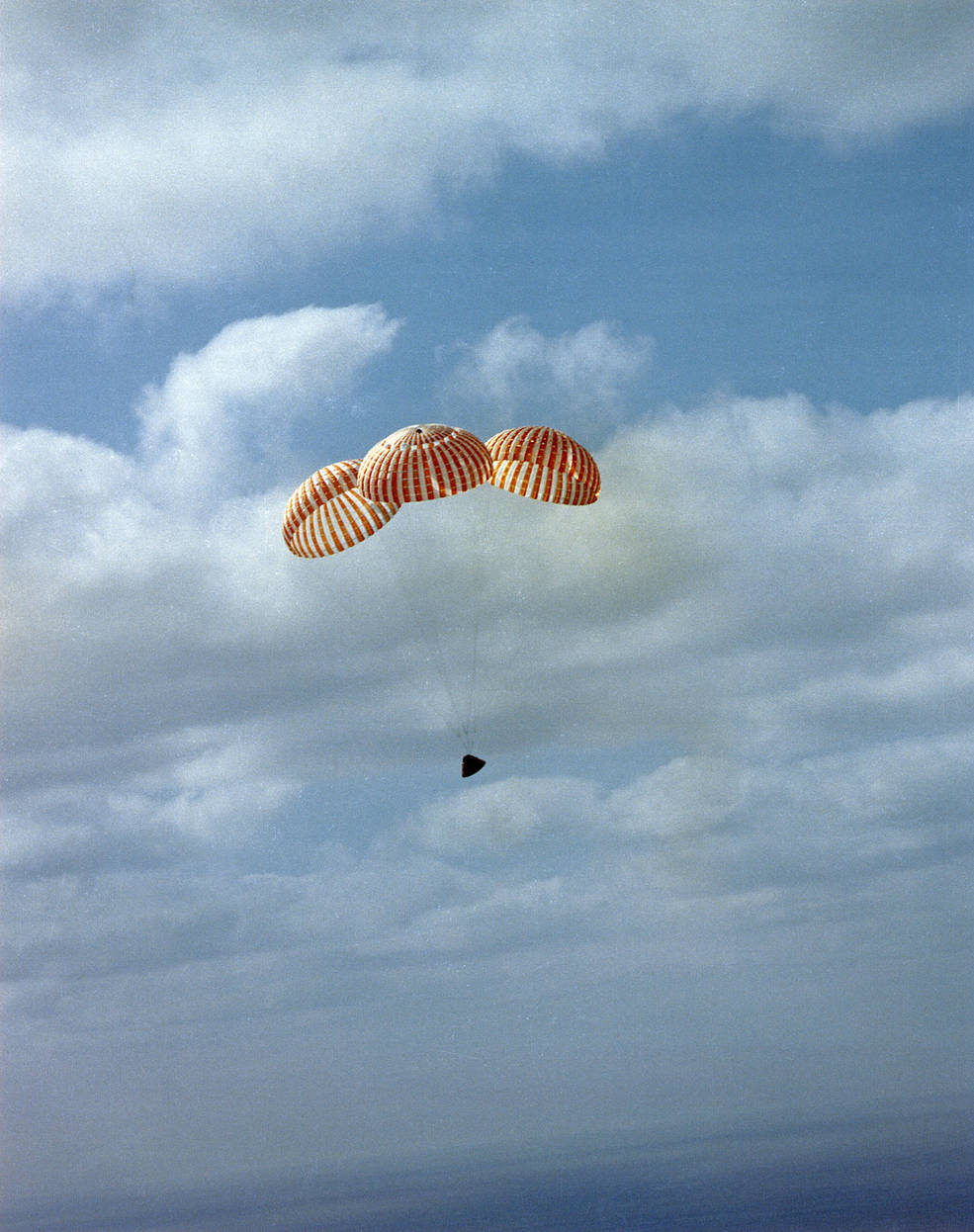
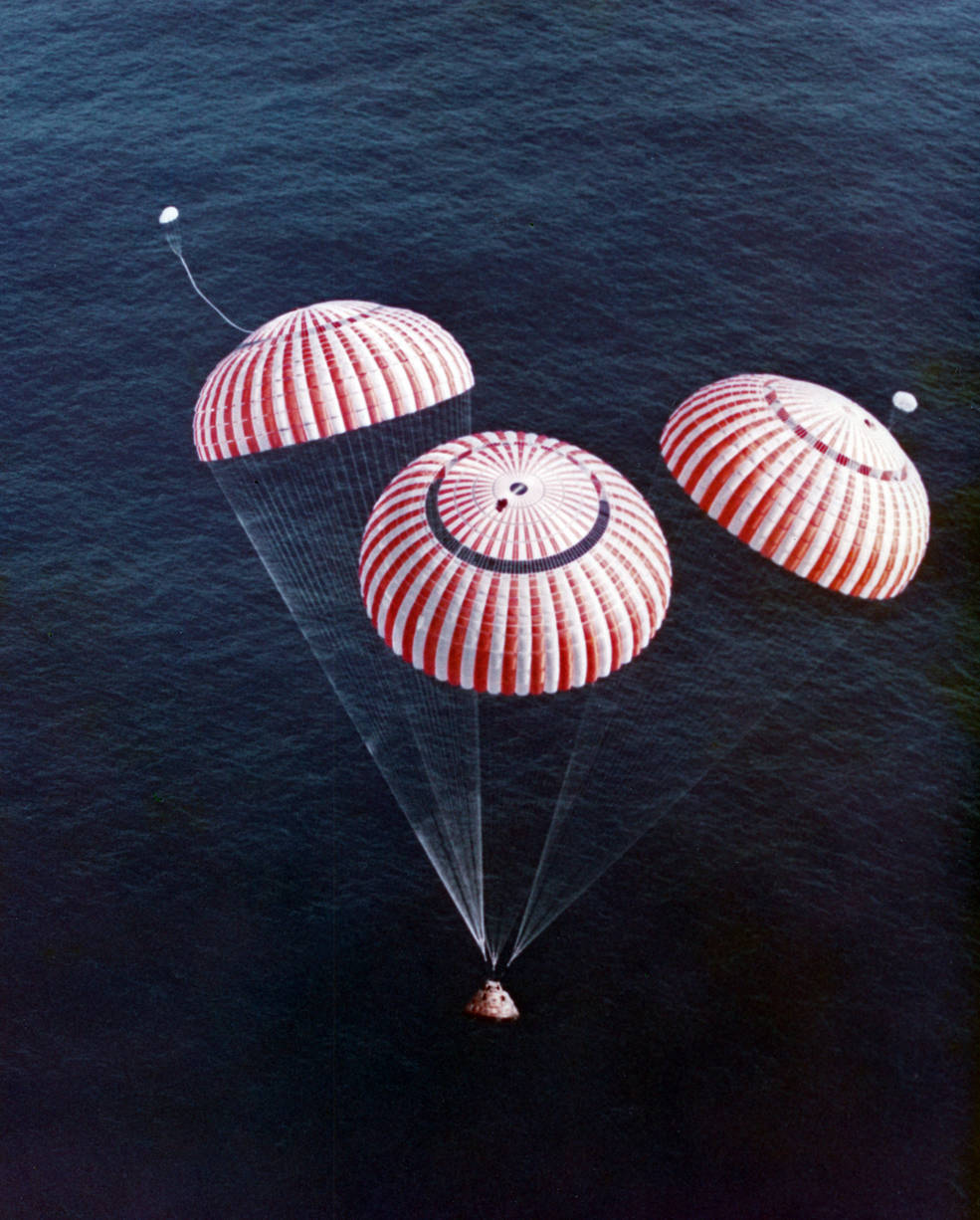
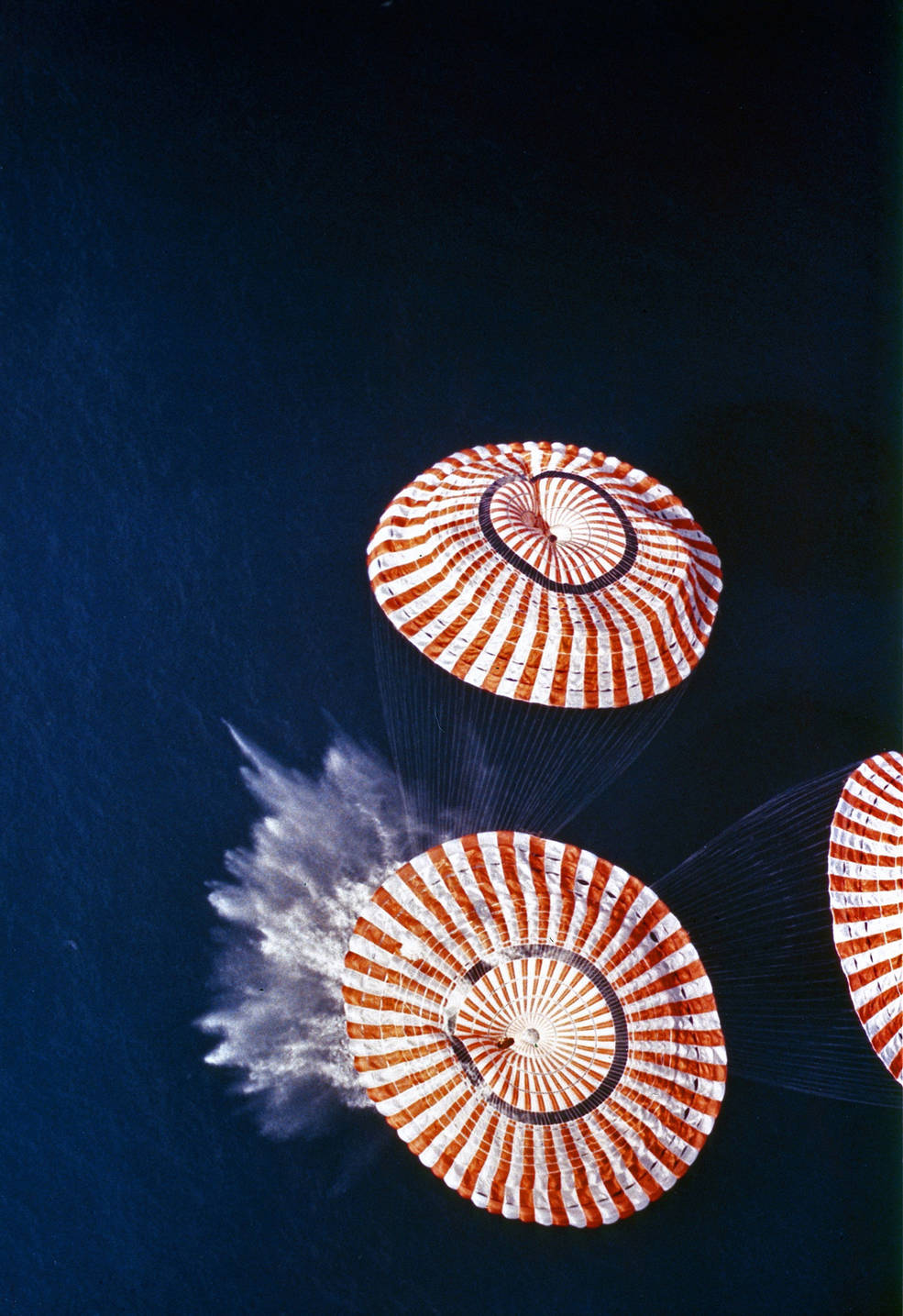
Left: Distant view of Apollo 16 descending on its three main parachutes. Middle: Apollo 16 moments before splashdown. Right: Splashdown of Apollo 17, bringing America’s first phase of human lunar exploration to a close.
When Cernan, Evans, and Schmitt awoke after their last night’s sleep in space, the CM America had closed the distance to Earth to 50,000 miles and its velocity continued to increase. To honor Navy men Cernan and Evans, Mission Control at the Manned Spacecraft Center, now NASA’s Johnson Space Center in Houston, played “Anchors Aweigh,” the U.S. Naval Academy’s fight song and unofficial anthem of the U.S. Navy, and “The Star Spangled Banner” as wakeup music, and indulged Evans when he requested a replay of “Anchors Aweigh.” Out the spacecraft’s windows, the relative size of the Earth had increased but the visible portion had shrunk to a thin crescent. The astronauts performed a minor course correction using two of the Service Module’s Reaction Control System thrusters to slightly tweak their spacecraft’s trajectory for reentry. The nine-second burn 28,000 miles from Earth refined their spacecraft’s trajectory through the reentry corridor. The astronauts powered up the CM’s Reaction Control System thrusters to prepare the spacecraft for its solo entry through the atmosphere and separated from the Service Module at an altitude of 2,200 miles. They oriented America so its heat shield faced in the direction of flight. The spacecraft experienced the upper layers of Earth’s atmosphere at about 400,000 feet, the point known as entry interface, at a velocity of 24,606 miles per hour. The spacecraft’s motion compressed the molecules of the thin air to create a sheath of plasma around the capsule, blocking out communications for about three and a half minutes. The astronauts briefly experienced a force of about 7gs due to the rapid deceleration. Following the radio blackout, America jettisoned its forward heat shield, also known as the apex cover, at 23,000 feet to enable the two drogue parachutes to deploy to help stabilize and slow the spacecraft to 170 miles per hour (mph). At 10,000 feet, the three 83-foot-wide main parachutes deployed, slowing the spacecraft’s descent to 22 mph. Apollo 17 splashed down in the Pacific Ocean near American Samoa, less than four miles from the prime recovery ship U.S.S. Ticonderoga and a little more than one mile from the planned target point, after a mission lasting 12 days, 13 hour, 52 minutes. The capsule assumed a Stable I orientation, floating right side up in the water.
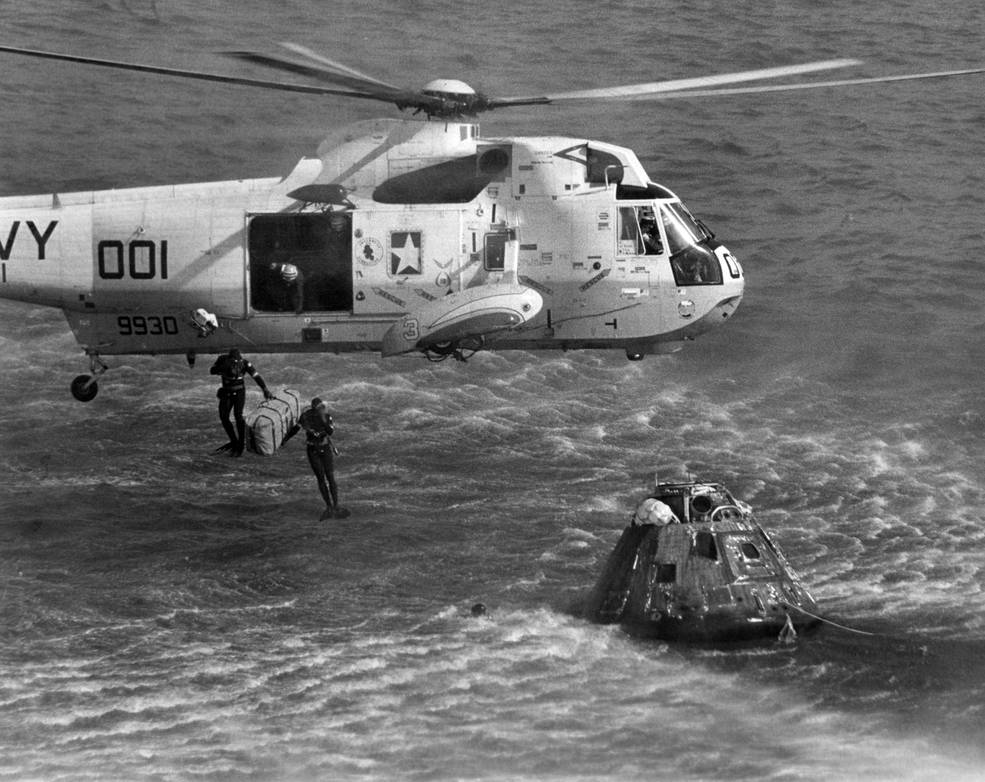
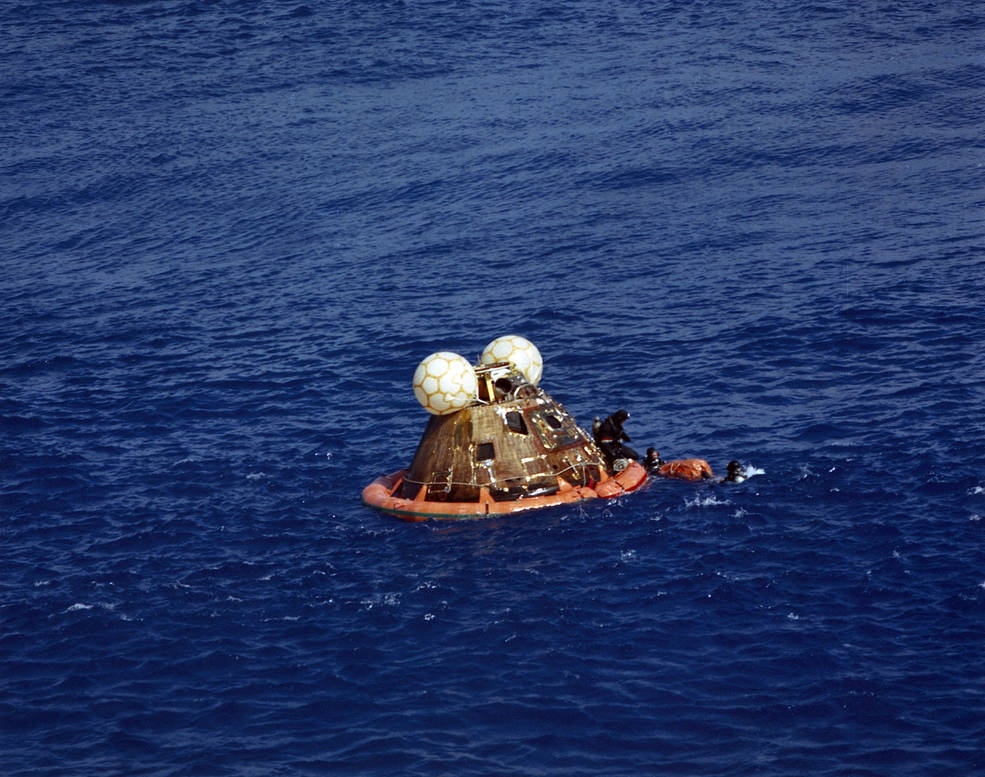
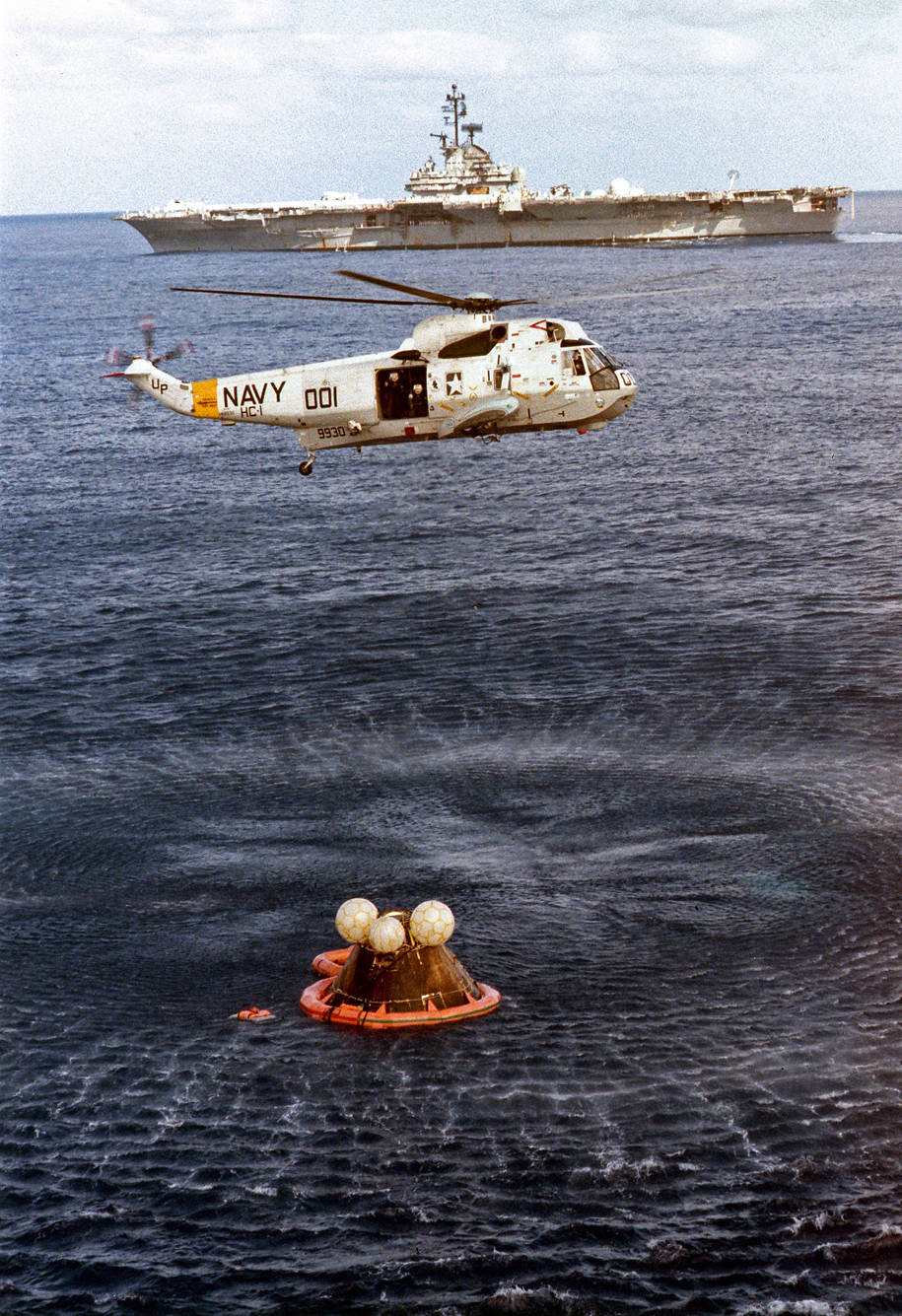
Left: Minutes after splashdown, recovery team swimmers jump in the water to attach a sea anchor and flotation collar on the Apollo 17 Command Module America. Middle: Swimmers have attached the flotation collar on America. Right: U.S.S. Ticonderoga begins its approach as swimmers prepare to help the astronauts onto the inflated life raft.
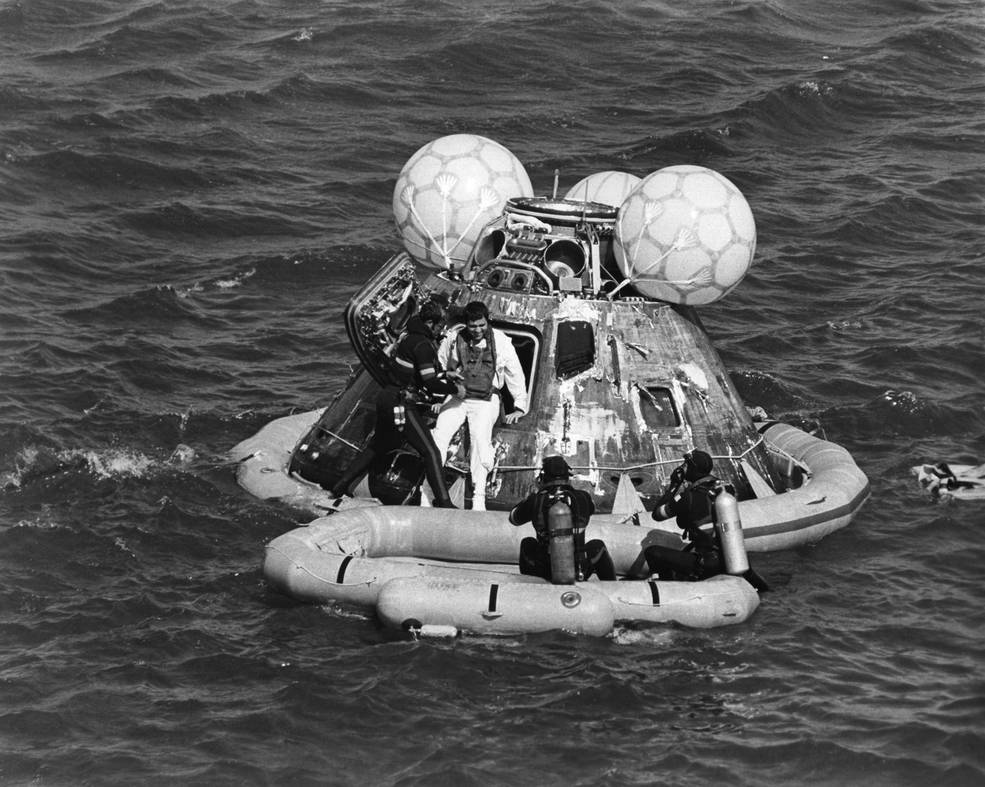
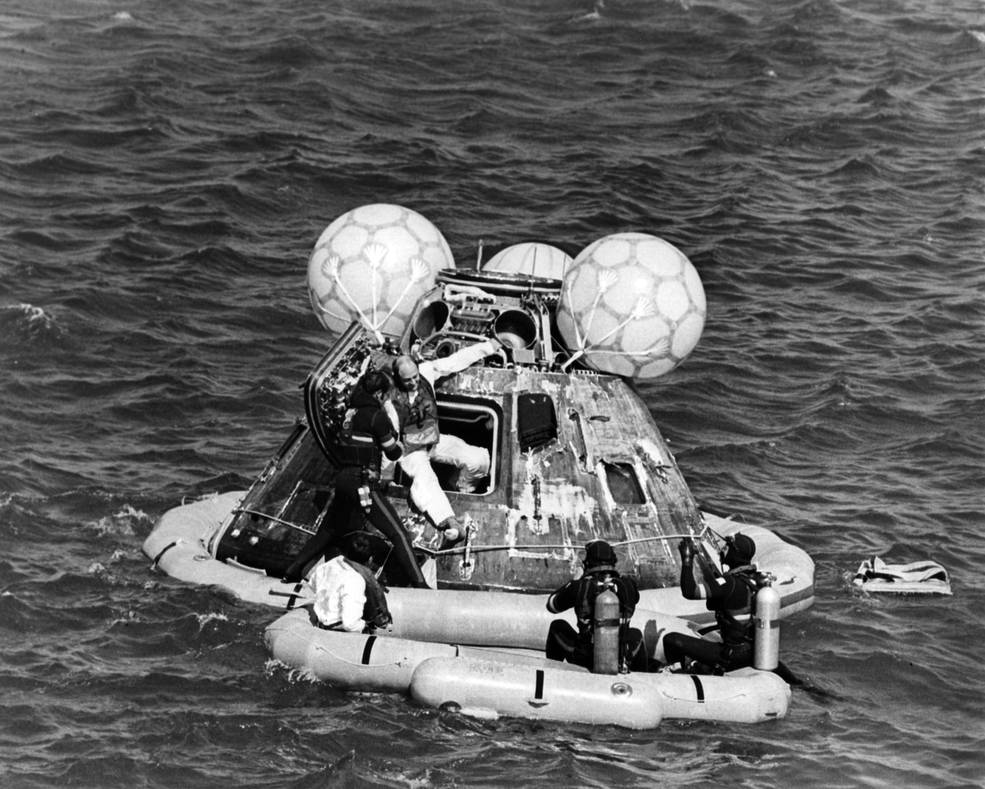

Apollo 17 astronauts Harrison H. “Jack” Schmitt, left, Ronald E. Evans, and Eugene A. Cernan exit the Command Module America onto the life raft.
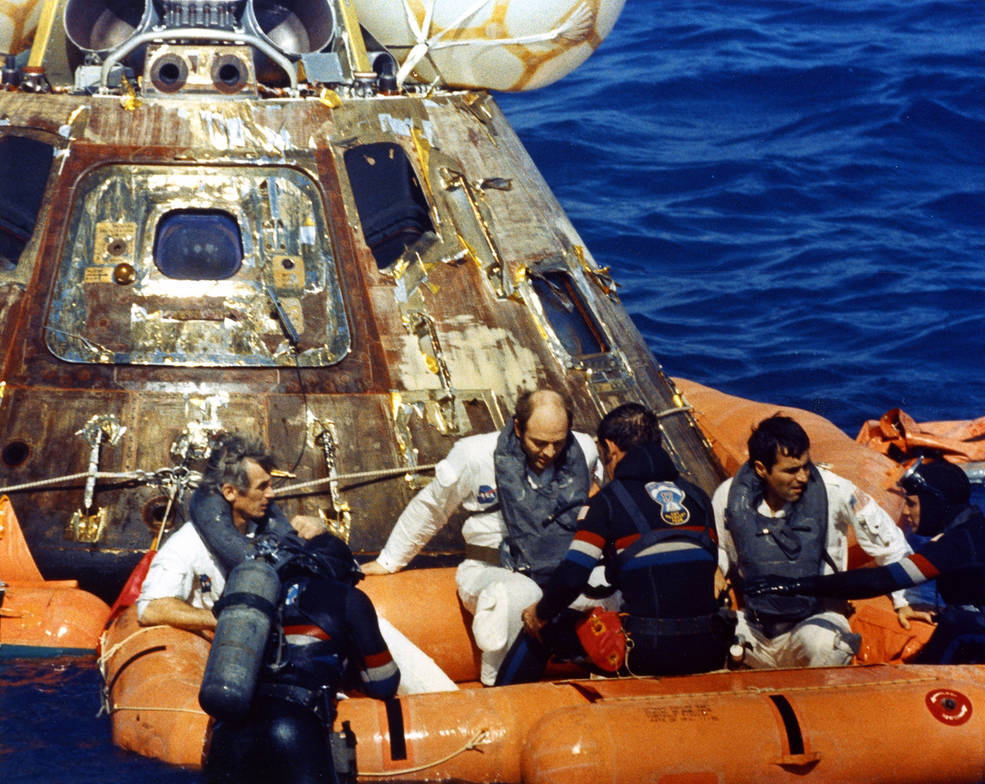
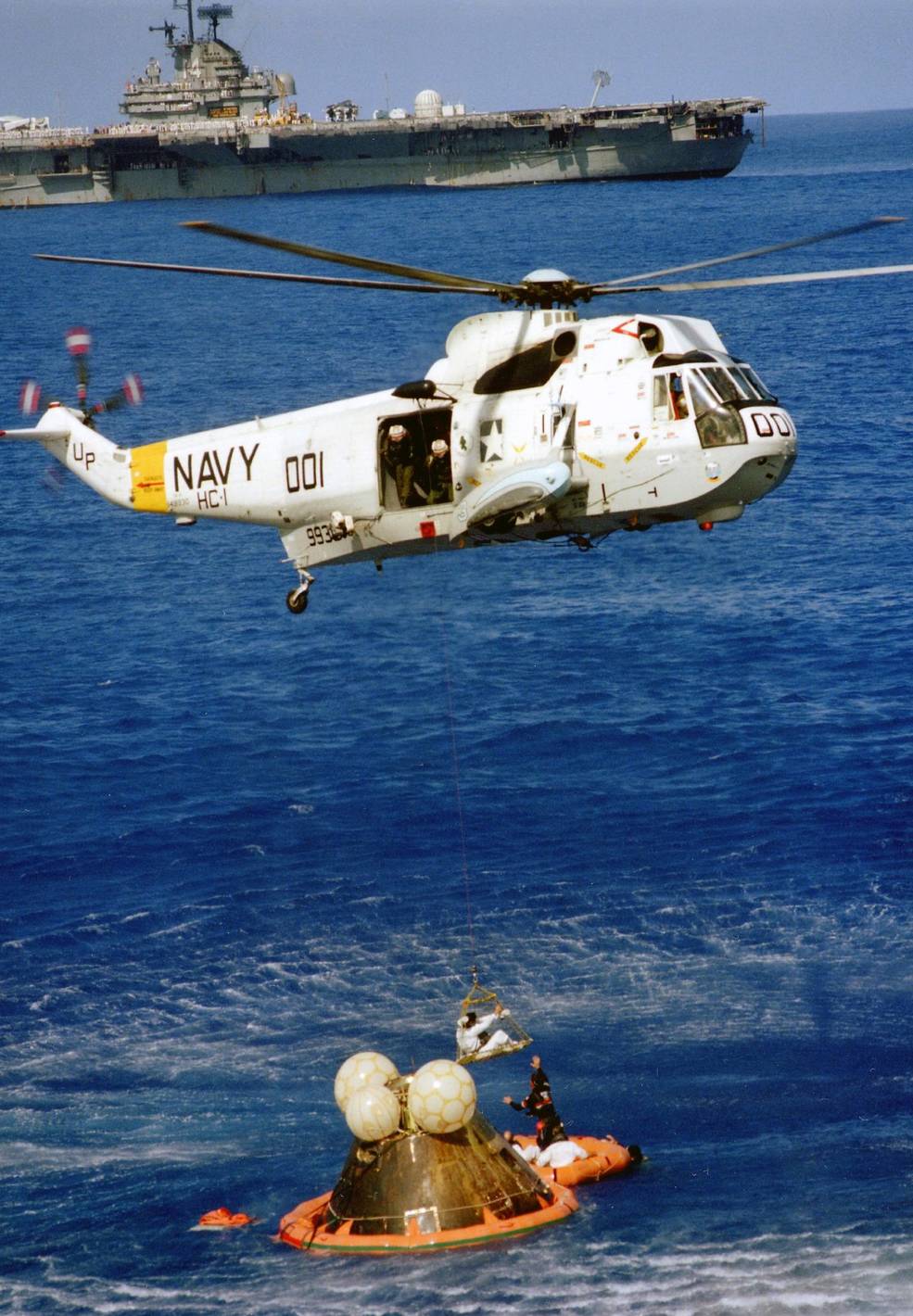
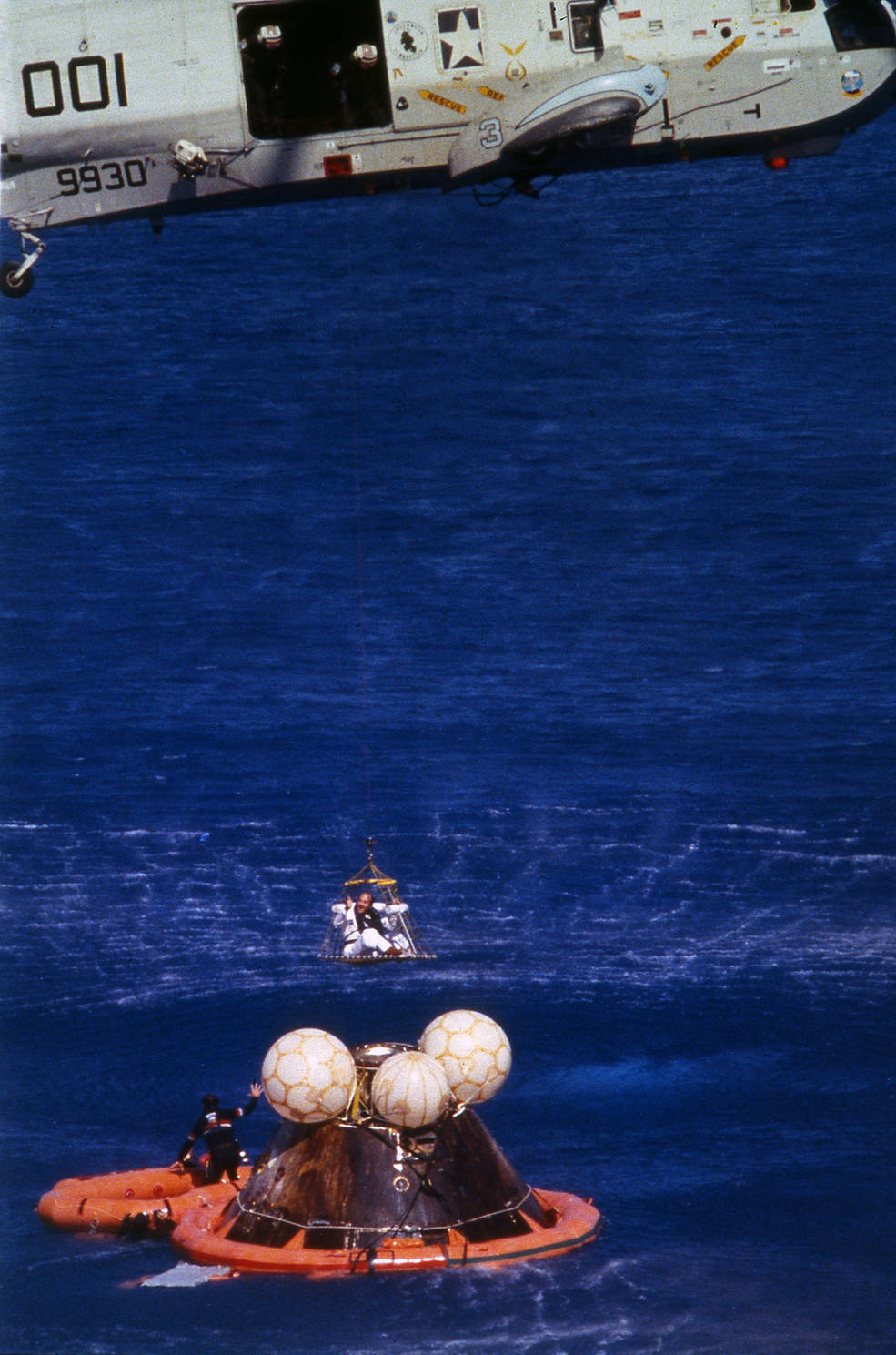
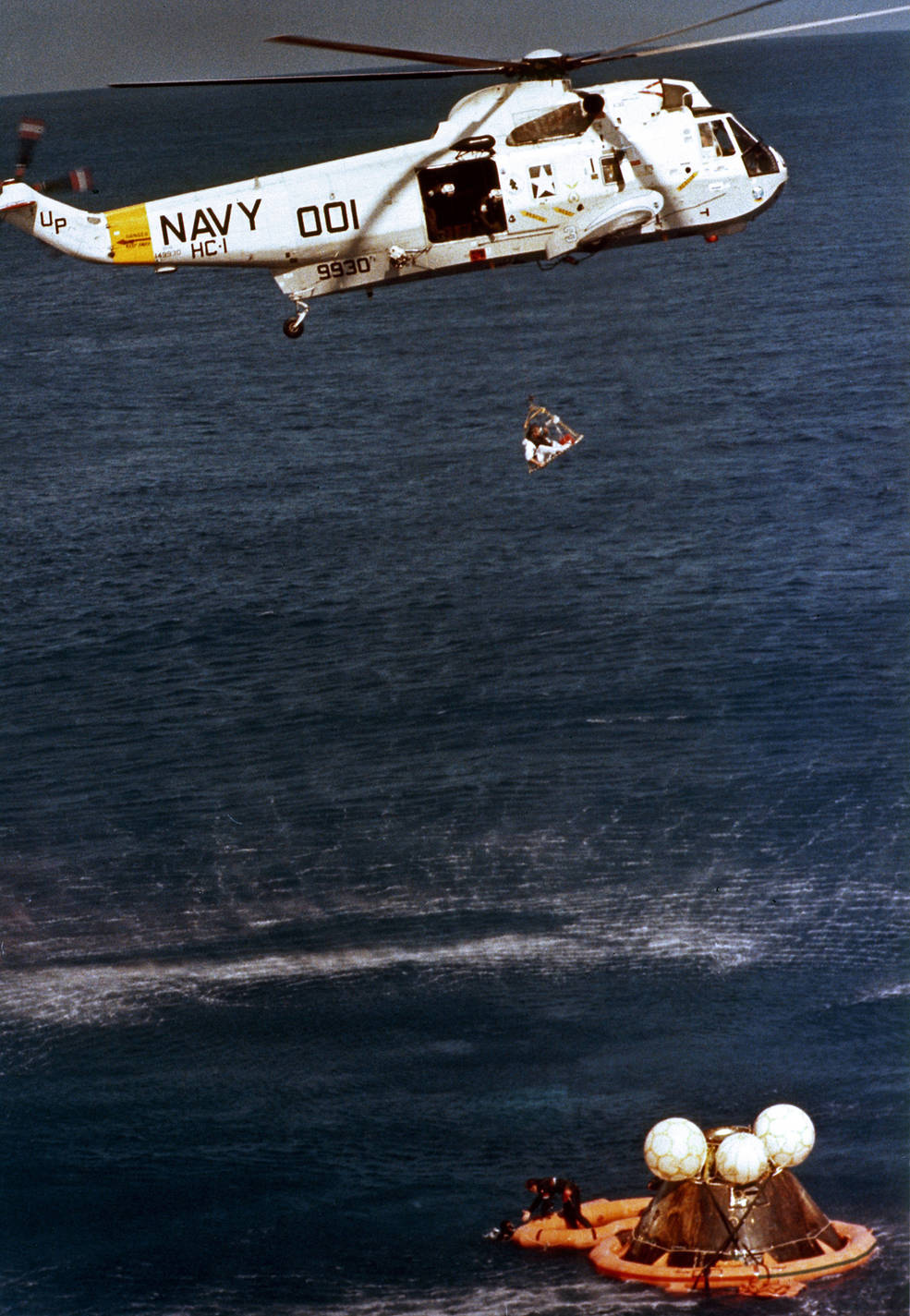
Left: Swimmers assist Apollo 17 astronauts Eugene A. Cernan, left, Ronald E. Evans, and Harrison H. “Jack” Schmitt in the life raft. Middle left: Rescuers lift Schmitt up to the recovery helicopter. Middle right: Rescuers next lift Evans. Right: Rescuers lift Cernan third.
Aided by swimmers from Task Force 130, Pacific Recovery Area, Schmitt, Evans, and Cernan exited America onto a life raft. First Schmitt, then Evans, and finally Cernan were lifted aboard a recovery helicopter and transported to Ticonderoga’s flight deck, arriving 52 minutes after splashdown. On the ship, Ticonderoga’s Captain Norman K. Green, Rear Admiral John L. Butts, commander of the Pacific Recovery Force, and Air Force Major General David M. Jones, Department of Defense Manager of Manned Space Flight Support Operations, formally welcomed Cernan, Evans, and Schmitt back from the Moon. The three astronauts gave speeches, thanking the teams at NASA who trained them for the mission and the U.S. Navy who recovered them. In Mission Control, the room filled with not only the flight controllers but many VIPs, and the customary cigars were lit as soon as Cernan, Evans, and Schmitt emerged from the recovery helicopter and stepped onto the ship’s deck. Sailors retrieved America onto Ticonderoga’s flight deck 71 minutes after the crew. The astronauts received their first medical examinations aboard Ticonderoga, with flight surgeons declaring them to be in excellent health after their 13-day trip to the Moon and back. They took showers, participated in celebrations with the ship’s officers and crew, talked by telephone with President Richard M. Nixon, who congratulated them on their successful mission, and also with their families. They spent their first night back on Earth aboard the recovery ship before beginning their trip back to Houston.
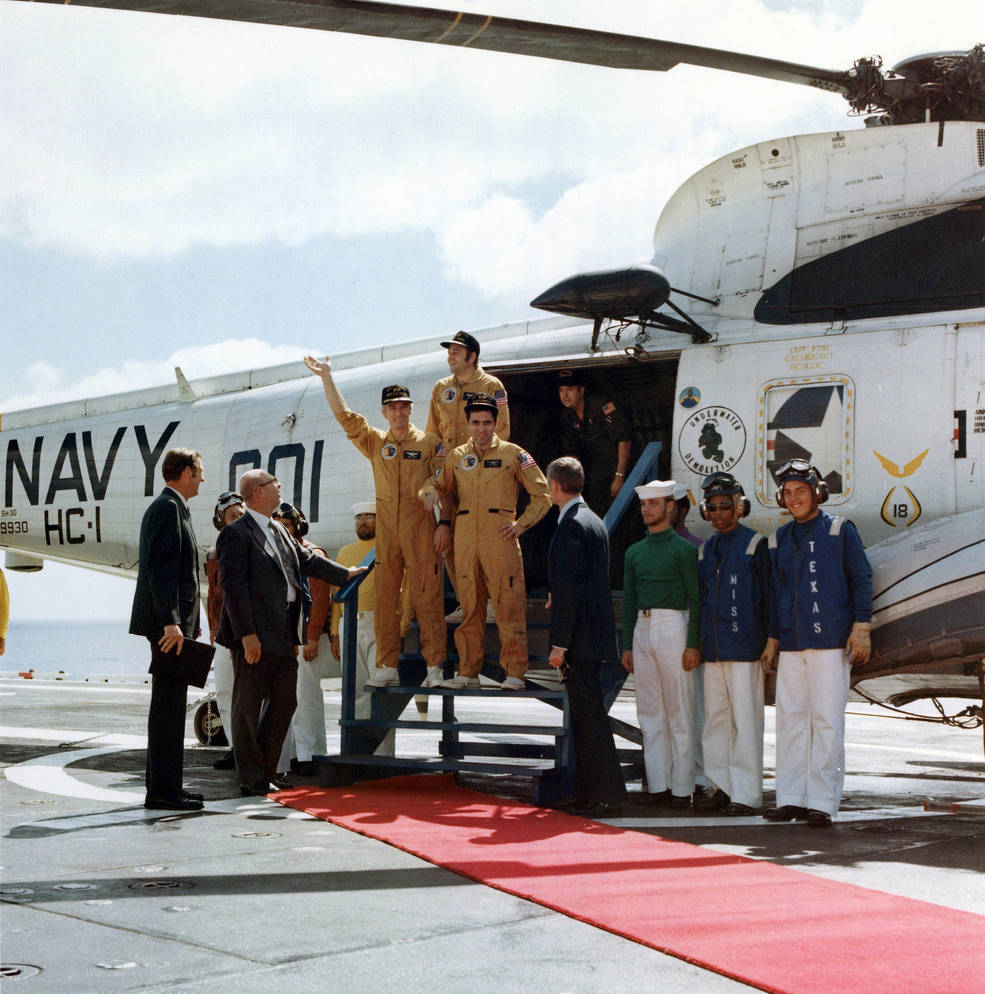
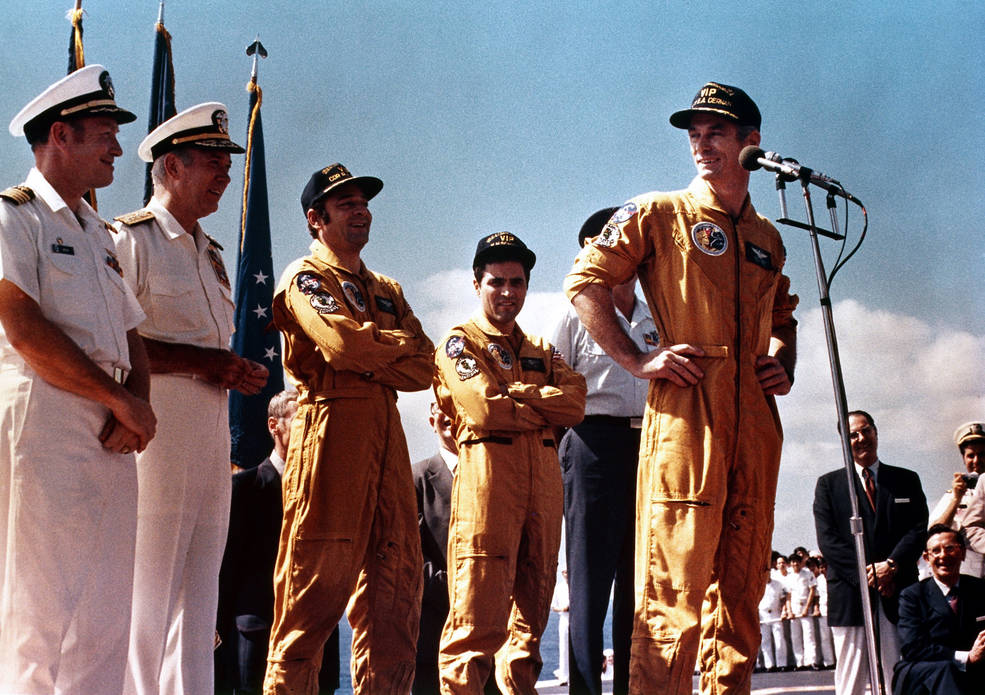
Left: Apollo 17 astronauts Eugene A. Cernan, left, Ronald E. Evans, and Harrison H. “Jack” Schmitt wave to the assembled sailors after exiting the recovery helicopter on the deck of the U.S.S. Ticonderoga. Right: Cernan addresses the assembled dignitaries and sailors on the Ticonderoga.
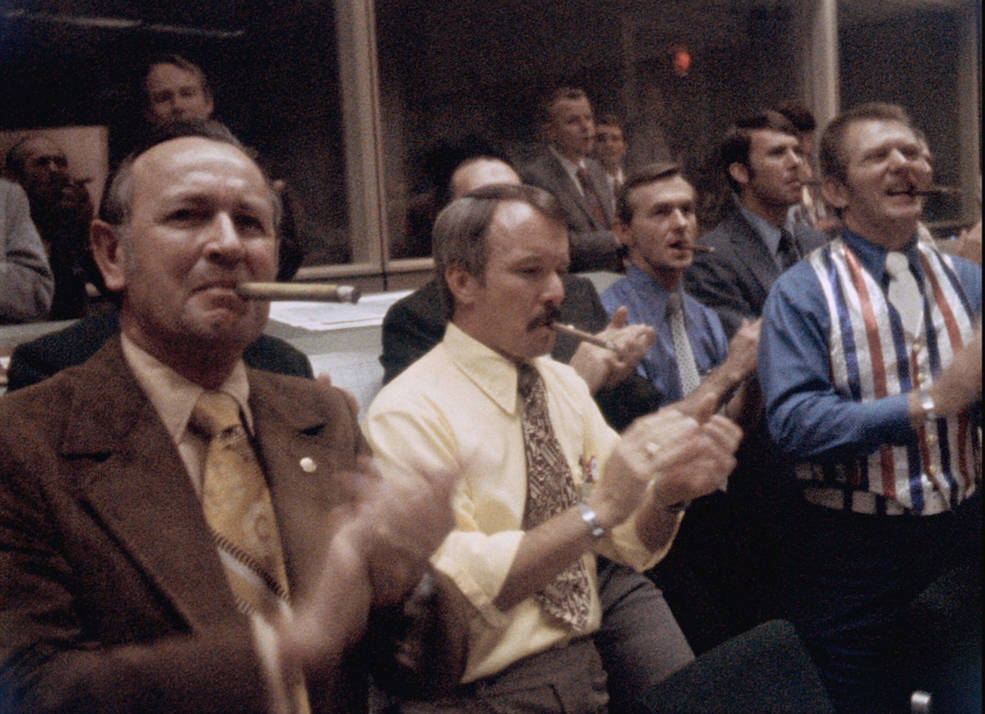
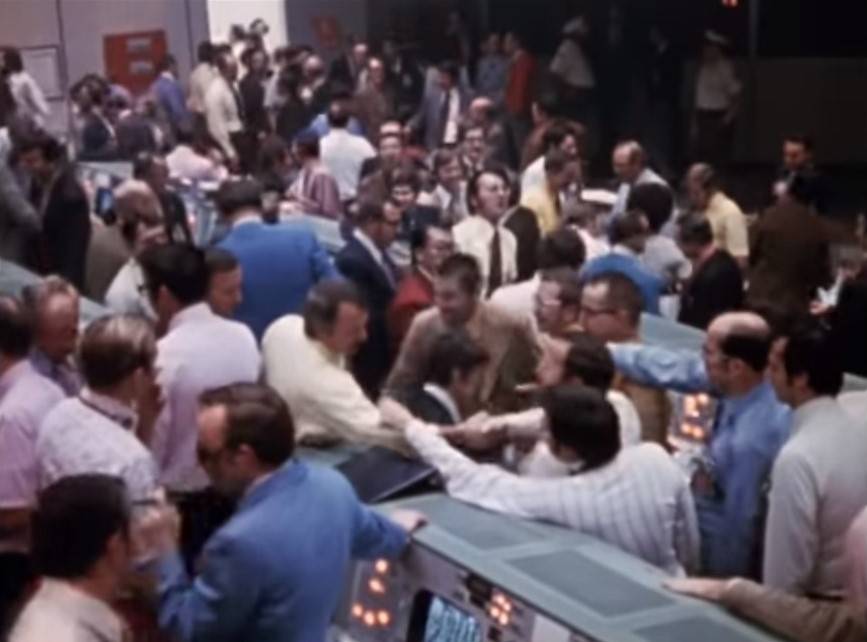
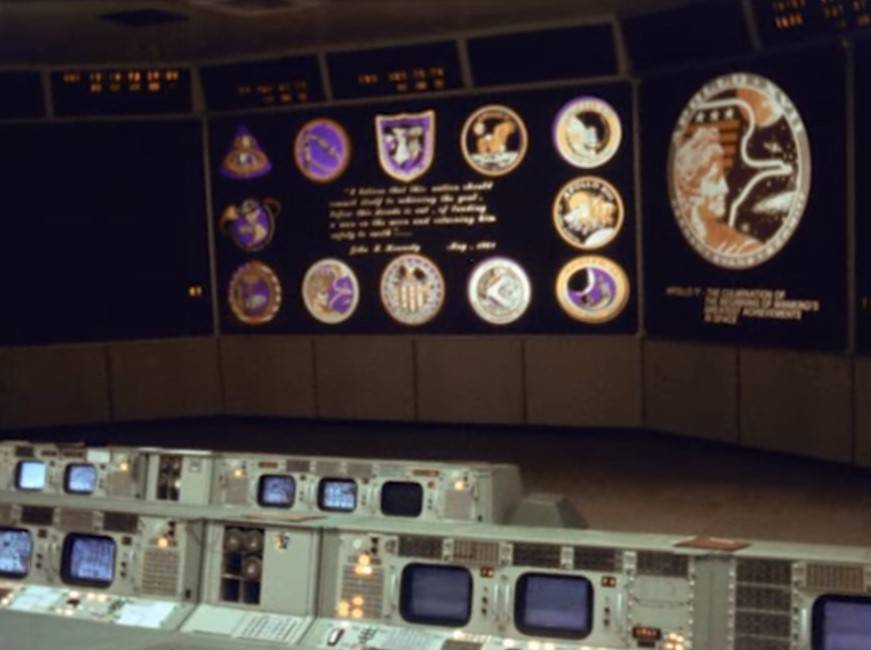
Left: In the Mission Control Center (MCC) at the Manned Spacecraft Center (MSC), now NASA’s Johnson Space Center in Houston, MSC Director Christopher C. Kraft, left, and flight directors Gerald D. Griffin, Charles R. “Chuck” Lewis, and Eugene F. Kranz light the celebratory cigars after the Apollo 17 astronauts arrived aboard the prime recovery ship the U.S.S. Ticonderoga. Middle: General celebrations at the MCC after the Apollo 17 splashdown. Right: The crew patches of all the Apollo missions projected on the big screen at MCC, now empty after the conclusion of the post splashdown celebrations.
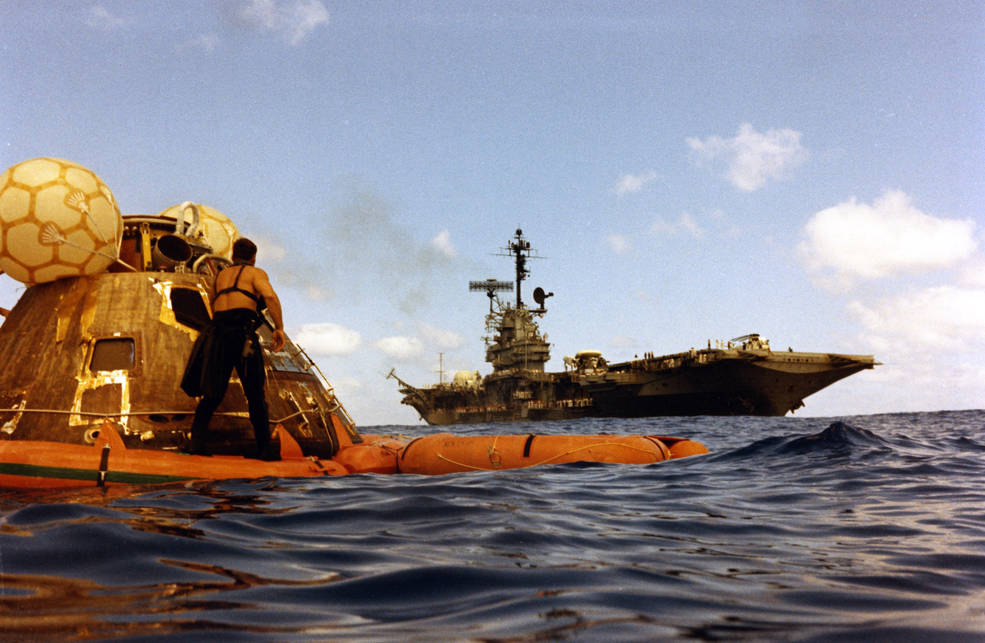
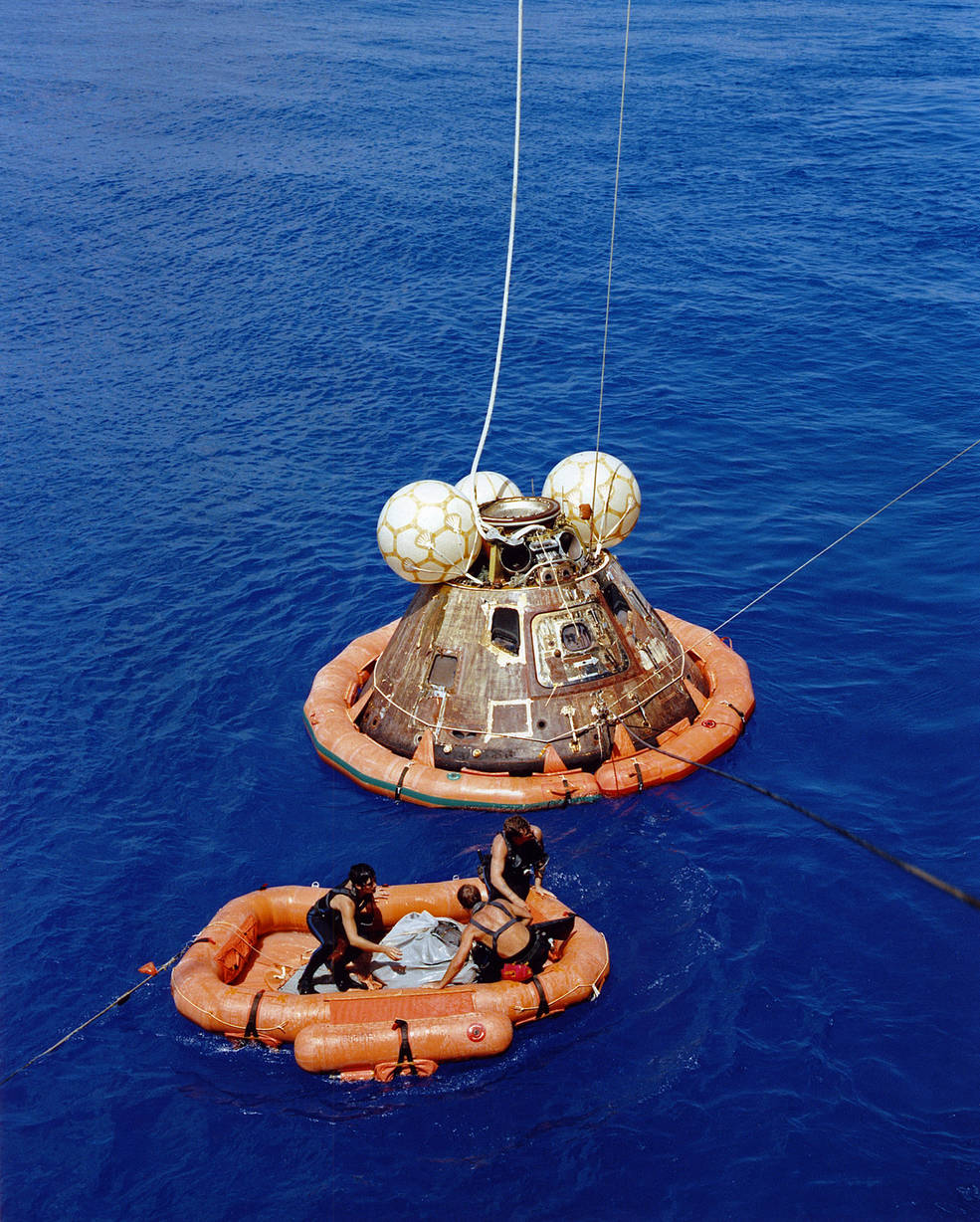
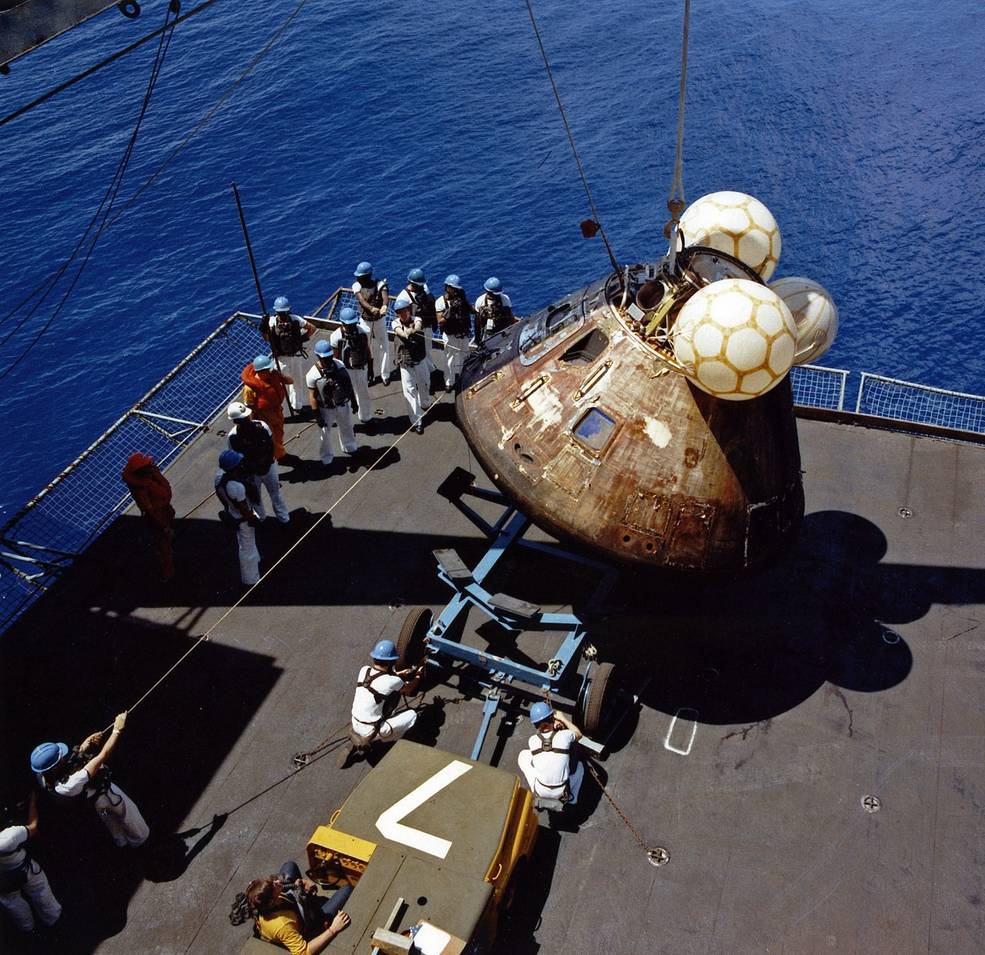
Left: The prime recovery ship U.S.S. Ticonderoga approaches the Apollo 17 Command Module America. Middle: The Ticonderoga has pulled alongside the capsule. Right: Sailors hoist America onto the Ticonderoga.
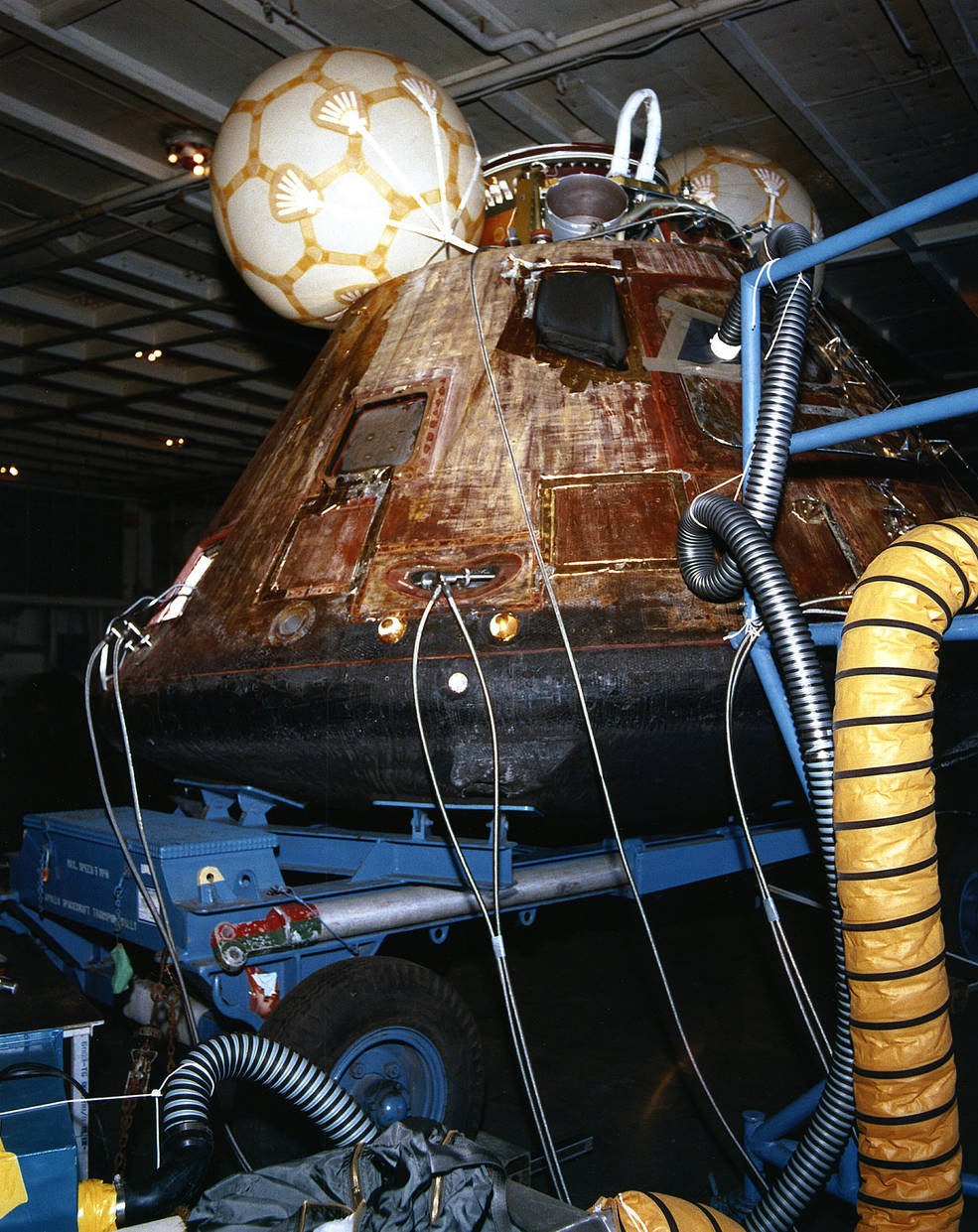
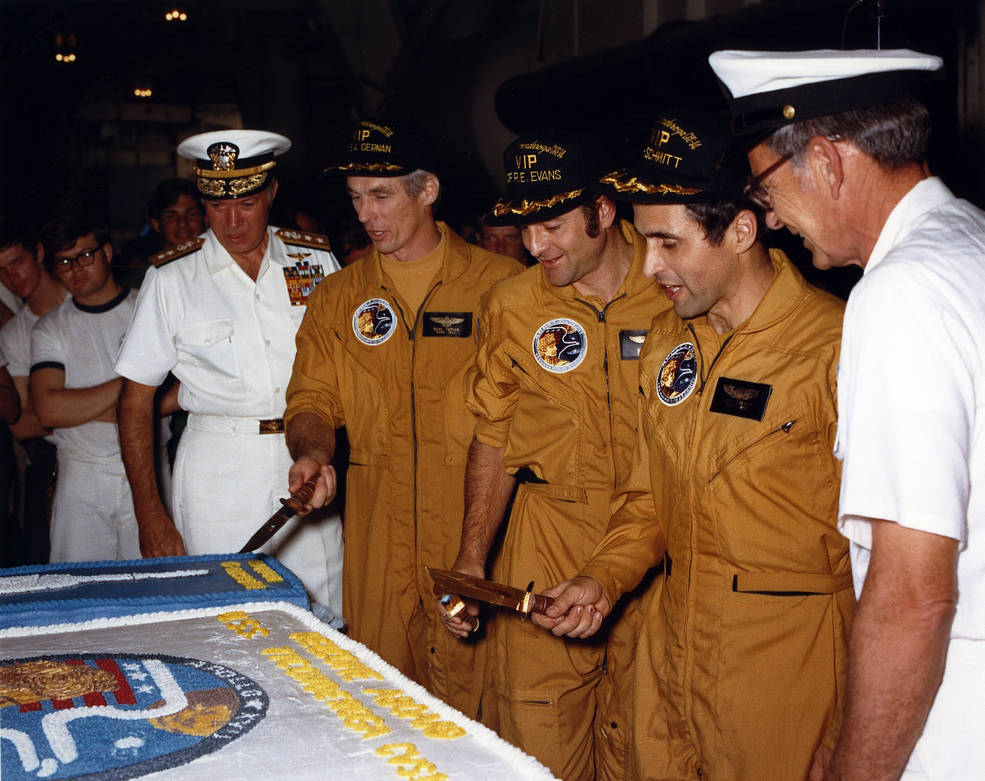
Left: Technicians begin the process of safing and inspecting the Apollo 17 Command Module America on the U.S.S. Ticonderoga. Right: Apollo 17 astronauts Eugene A. Cernan, Ronald E. Evans, and Harrison H. “Jack” Schmitt prepare to cut the cake in their honor as officers of the U.S.S. Ticonderoga look on.
To be continued…
John Uri
NASA Johnson Space Center


























